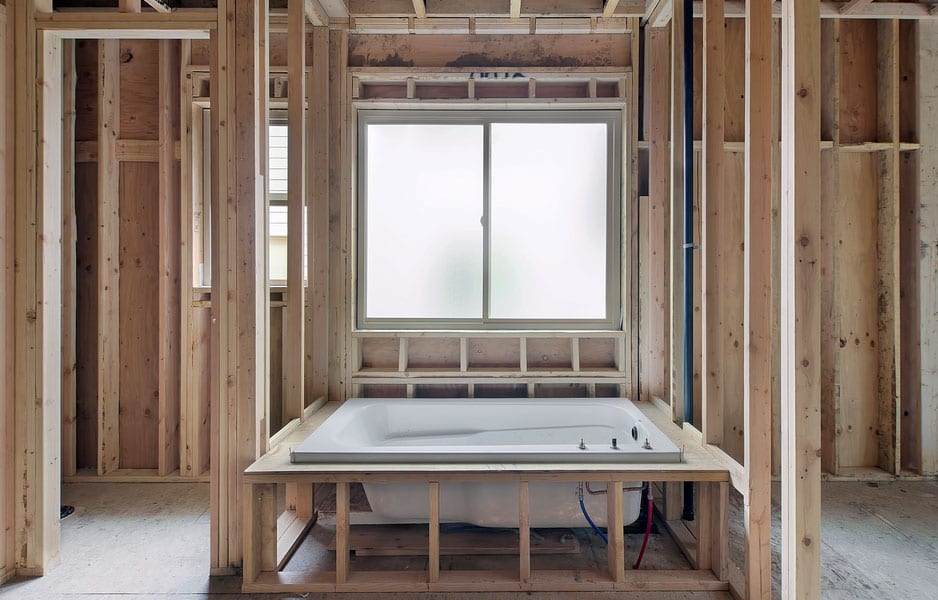In the plumbing industry, there are generally two types of plumbing. One kind of plumbing is service plumbing. This type of plumbing involves repair or alteration work that takes place after a home is already built.
The other type of plumbing is new construction plumbing, which is further divided into rough-in plumbing and finish plumbing. In new construction plumbing, a structure is in the process of being built, and plumbing is installed in that structure for the first time during the overall building process. Every home or business that has plumbing in it, at one time, had construction plumbing take place in which all new plumbing systems were initially put in.
Common Components
So, what are some of the main components to a plumbing system that new construction plumbers must install when a structure is first being built? Water supply pipes are one main component. These are pipes specifically designed to carry fresh potable water into the structure from an outside water source. The most common sources that these pipes are fed from and connected to are city water systems and private well systems.
Drain pipes are another critical component in virtually all construction plumbing projects. These pipes are usually much larger than water supply pipes and carry away wastewater to an outside destination. These pipes connect to your typical fixtures such as sinks, showers, and toilets, and then lead out of the structure to a city sewer system or a private septic system.
Vents are an important component of most plumbing systems also. These pipes are connected to the building’s drain pipes and create ventilation by which the drain pipes can operate correctly. To understand how these work, you can imagine a straw that is full of liquid. If you place your finger over the top end of the straw, despite the effects of gravity, the straw will not empty itself of the water contained inside. By removing your finger, the water can be displaced by air, and it will then rapidly fall out of the opposite end of the straw. Vent pipes create this effect so that fluids in their connected drain pipes will adequately drain out through the pipes without impediment.
Yet another common component to most plumbing systems is the water heater. New construction plumbers install these new and attach them to the water supply pipe system so that there is an option for hot water at fixtures such as sinks and showers. Water heaters will also often be set in a pan that is connected to a drain. This is so that, should the water heater leak, the resulting water will be caught in the pan and carried off via its connected drain pipe.
Finally, individual plumbing fixtures are typically the last components added to the new construction plumbing in a structure. These fixtures include sinks, faucets, bath and shower trim and controls, toilets, and other points of use for the end-user. This work is usually only done in the last phases of the construction of a building.
Testing
Once the whole of a new construction plumbing system has been fully installed, the installers must put the system through a series of tests before it can be passed off as usable. This is usually done by filling the pipes with air pressure and then monitoring that pressure for a period of time to see if any leaking takes place. In some cases, water is also used for pressure-testing all of the new pipework.
Here at E Dennis, we know plumbing systems inside and out and are the leading new construction plumbing and service plumbing experts for the greater Atlanta area. We operate seven days a week and specialize in residential plumbing, commercial plumbing, and all other kinds in between. Give us a call today, and experience the best the Atlanta area has to offer.




